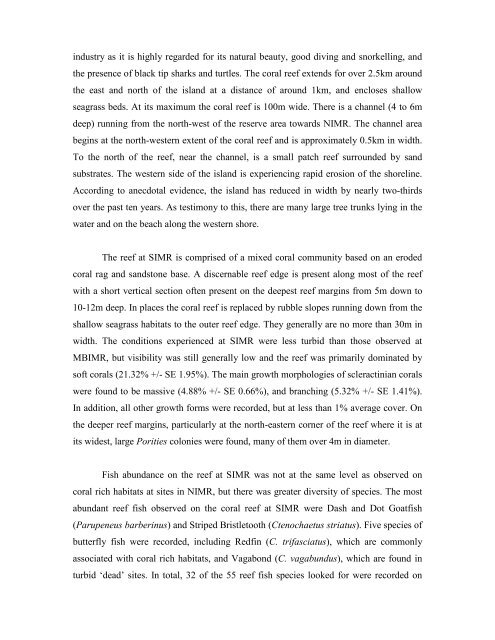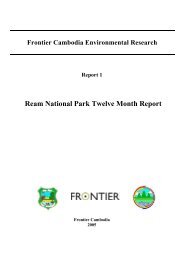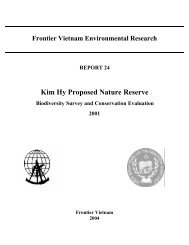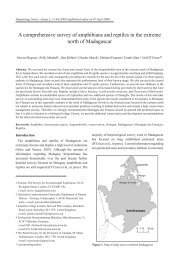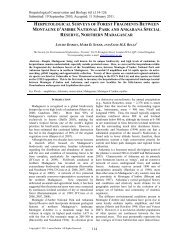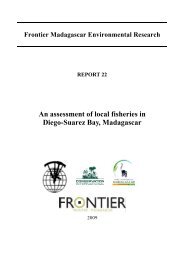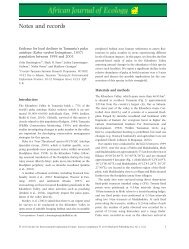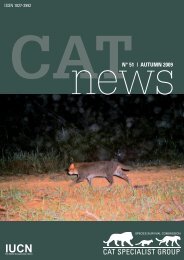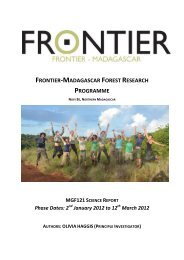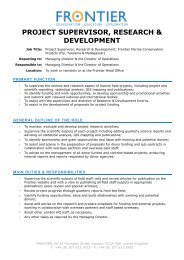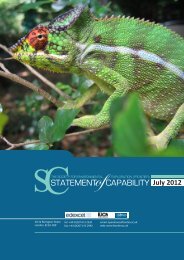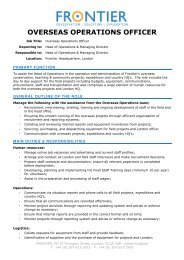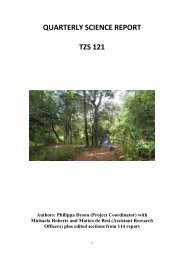Biophysical Survey of Mafia Island Marine Reserves
Biophysical Survey of Mafia Island Marine Reserves
Biophysical Survey of Mafia Island Marine Reserves
You also want an ePaper? Increase the reach of your titles
YUMPU automatically turns print PDFs into web optimized ePapers that Google loves.
industry as it is highly regarded for its natural beauty, good diving and snorkelling, and<br />
the presence <strong>of</strong> black tip sharks and turtles. The coral reef extends for over 2.5km around<br />
the east and north <strong>of</strong> the island at a distance <strong>of</strong> around 1km, and encloses shallow<br />
seagrass beds. At its maximum the coral reef is 100m wide. There is a channel (4 to 6m<br />
deep) running from the north-west <strong>of</strong> the reserve area towards NIMR. The channel area<br />
begins at the north-western extent <strong>of</strong> the coral reef and is approximately 0.5km in width.<br />
To the north <strong>of</strong> the reef, near the channel, is a small patch reef surrounded by sand<br />
substrates. The western side <strong>of</strong> the island is experiencing rapid erosion <strong>of</strong> the shoreline.<br />
According to anecdotal evidence, the island has reduced in width by nearly two-thirds<br />
over the past ten years. As testimony to this, there are many large tree trunks lying in the<br />
water and on the beach along the western shore.<br />
The reef at SIMR is comprised <strong>of</strong> a mixed coral community based on an eroded<br />
coral rag and sandstone base. A discernable reef edge is present along most <strong>of</strong> the reef<br />
with a short vertical section <strong>of</strong>ten present on the deepest reef margins from 5m down to<br />
10-12m deep. In places the coral reef is replaced by rubble slopes running down from the<br />
shallow seagrass habitats to the outer reef edge. They generally are no more than 30m in<br />
width. The conditions experienced at SIMR were less turbid than those observed at<br />
MBIMR, but visibility was still generally low and the reef was primarily dominated by<br />
s<strong>of</strong>t corals (21.32% +/- SE 1.95%). The main growth morphologies <strong>of</strong> scleractinian corals<br />
were found to be massive (4.88% +/- SE 0.66%), and branching (5.32% +/- SE 1.41%).<br />
In addition, all other growth forms were recorded, but at less than 1% average cover. On<br />
the deeper reef margins, particularly at the north-eastern corner <strong>of</strong> the reef where it is at<br />
its widest, large Porities colonies were found, many <strong>of</strong> them over 4m in diameter.<br />
Fish abundance on the reef at SIMR was not at the same level as observed on<br />
coral rich habitats at sites in NIMR, but there was greater diversity <strong>of</strong> species. The most<br />
abundant reef fish observed on the coral reef at SIMR were Dash and Dot Goatfish<br />
(Parupeneus barberinus) and Striped Bristletooth (Ctenochaetus striatus). Five species <strong>of</strong><br />
butterfly fish were recorded, including Redfin (C. trifasciatus), which are commonly<br />
associated with coral rich habitats, and Vagabond (C. vagabundus), which are found in<br />
turbid ‘dead’ sites. In total, 32 <strong>of</strong> the 55 reef fish species looked for were recorded on


